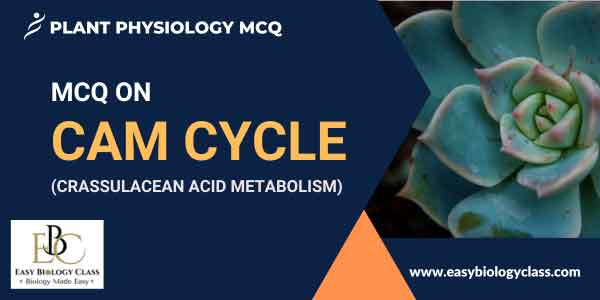The CAM (Crassulacean Acid Metabolism) cycle is a photosynthetic adaptation in some plants allowing them to fix CO₂ at night, storing it as malic acid. During the day, CO₂ is released for photosynthesis. This conserves water, making it ideal for arid environments. This is an MCQ on CAM Cycle with Answer Key.
<<< Back to Plant Physiology MCQ Page
You may also like... NOTES QUESTION BANK COMPETITIVE EXAMS. PPTs UNIVERSITY EXAMS DIFFERENCE BETWEEN.. MCQs PLUS ONE BIOLOGY NEWS & JOBS MOCK TESTS PLUS TWO BIOLOGY PRACTICAL


